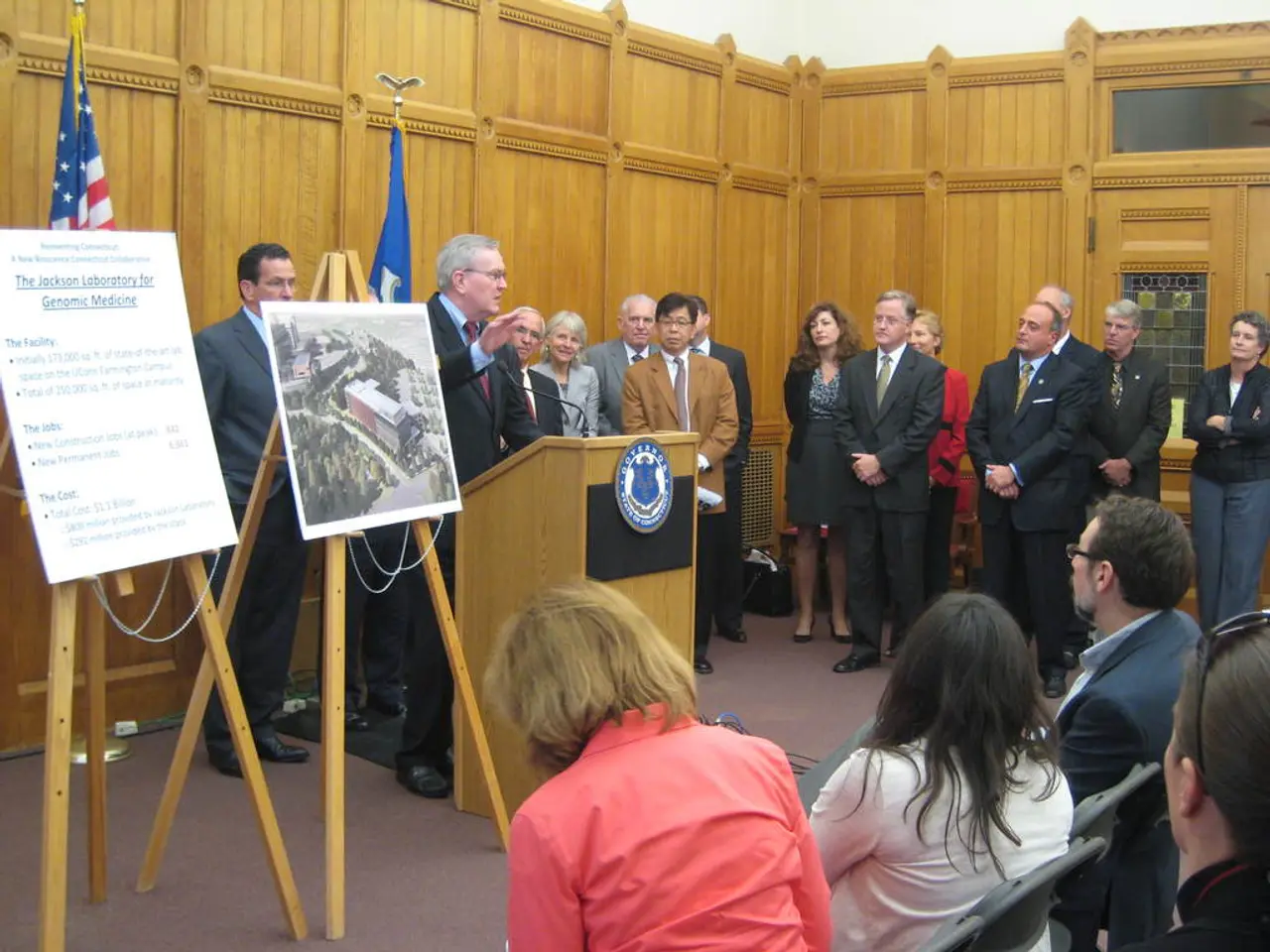International negotiators present outline for "Loss and Damage" climate plan prior to COP28, as the World Bank prepares to manage a fund addressing global climate destruction, amidst controversy.
The Loss and Damage Fund, established at COP27 last year, is set to begin disbursing financial assistance to climate-vulnerable developing countries in 2025. This fund, designed to help nations address the costs of losses and damages caused by climate disasters, has been formally operationalized and is preparing to deliver aid [1][3].
Since its inception, key developments have taken place. The Fund has been officially launched, and an inaugural high-level dialogue was held in April 2022, focusing on coordination and complementarity among funding entities to strengthen responses to loss and damage [1][3]. As a platform coordinating various funding arrangements under the UN Framework Convention on Climate Change (UNFCCC) and the Paris Agreement, the Fund aims to improve transparency and effectiveness in delivering financial support to the most affected countries [1].
However, concerns about the Fund's implementation remain prominent as COP28 approaches. These include funding clarity and adequacy, coordination challenges, timely and equitable access, and political will and accountability [2][5].
Funding clarity and adequacy are crucial issues, with details about the size, sources, and delivery mechanisms of contributions remaining unclear [2][5]. Despite the historic agreement, the earlier $100 billion climate finance pledge has not been fully met, and the new funding targets aim to be more needs-based and data-driven to build trust [2][5].
Ensuring effective synergy among existing climate finance mechanisms and the Fund is complex. The high-level dialogue reported identifying gaps, promoting complementarities, and enhancing transparency, but operationalizing this on the ground can be difficult [1].
Developing countries worry about timely disbursement of funds and whether allocations will be adequate to address escalating climate impacts [3][4]. The need for direct support without restrictive conditions is a pressing concern for recipient nations [2][5].
Donor countries face pressure to fulfill pledges transparently, while recipient nations stress the urgency of the situation. The agreement includes a provision that makes payments to the Fund voluntary, raising questions about political will and accountability [2][5].
The US has argued that rich countries are not obligated to pay for loss and damage under the Paris Agreement. However, international law is clear regarding the obligations of States in the context of climate change, and upcoming clarifications by international courts about these obligations become increasingly important [4].
Lien Vandamme, Senior Campaigner at the Center for International Environmental Law (CIEL), believes the Fund fails to deliver on justice, equity, and human rights [4]. Vandamme also expressed concern that wealthy nations continue to deny justice to frontline communities under the UNFCCC [4].
The Loss and Damage Fund's operation recommendations, including who gets the money and who pays, were approved by the Transitional Committee (TC), a 24-member committee tasked with operationalizing the Fund [2]. The World Bank was assigned as the host of the Fund on a four-year interim basis [2].
At the time of the Fund's establishment in 2022, only a handful of UN member states, including Denmark, Germany, Austria, Belgium, Ireland, New Zealand, and Canada, had pledged funding [2]. The US stated that the fund should receive financial input from a wide range of sources, including carbon markets and international pricing mechanisms [2].
As world leaders and negotiators prepare for COP28, set to begin on November 30 in Dubai, the focus is on overcoming implementation bottlenecks related to funding scale, coordination, timely delivery, and trust between donors and recipients [1]. The featured image for this article is from Flickr/COP28 UAE.
[1] COP27: Loss and Damage Fund Agreed Upon for Climate-Vulnerable Countries. (2021, November 13). Retrieved from https://unfccc.int/news/cop27-loss-and-damage-fund-agreed-upon-for-climate-vulnerable-countries
[2] COP27: The Loss and Damage Fund and the Road Ahead. (2022, January 10). Retrieved from https://www.ciel.org/cop27-the-loss-and-damage-fund-and-the-road-ahead/
[3] COP27: The Loss and Damage Fund – A Step Forward for Climate Justice. (2021, November 15). Retrieved from https://www.greenpeace.org/international/en/news/cop27-the-loss-and-damage-fund-a-step-forward-for-climate-justice/
[4] COP27: The Loss and Damage Fund – A Step in the Right Direction, but Much Work Remains. (2021, November 19). Retrieved from https://www.climate-laws.org/en/cop27-the-loss-and-damage-fund-a-step-in-the-right-direction-but-much-work-remains
[5] COP27: The Loss and Damage Fund – A Game Changer for Climate Finance? (2021, November 12). Retrieved from https://www.climate-laws.org/en/cop27-the-loss-and-damage-fund-a-game-changer-for-climate-finance
- The Loss and Damage Fund, established at COP27, is preparing to disburse financial assistance to climate-vulnerable developing countries in 2025, aiming to strengthen responses to loss and damage caused by climate change.
- Ensuring funding clarity and adequacy is a key concern as the Fund prepares for operation, with details about the size, sources, and delivery mechanisms of contributions remaining unclear.
- Timely disbursement of funds and adequate allocations to address escalating climate impacts are pressing concerns for developing countries.
- Direct support without restrictive conditions is a priority for recipient nations, as they stress the urgency of the situation.
- As COP28 approaches, the focus is on overcoming implementation bottlenecks related to funding scale, coordination, timely delivery, and trust between donors and recipients.
- Climate policy and legislation, environmental science, general news, and politics are all fields discussing the operations, implications, and future of the Loss and Damage Fund, with a focus on climate justice and climate action.






